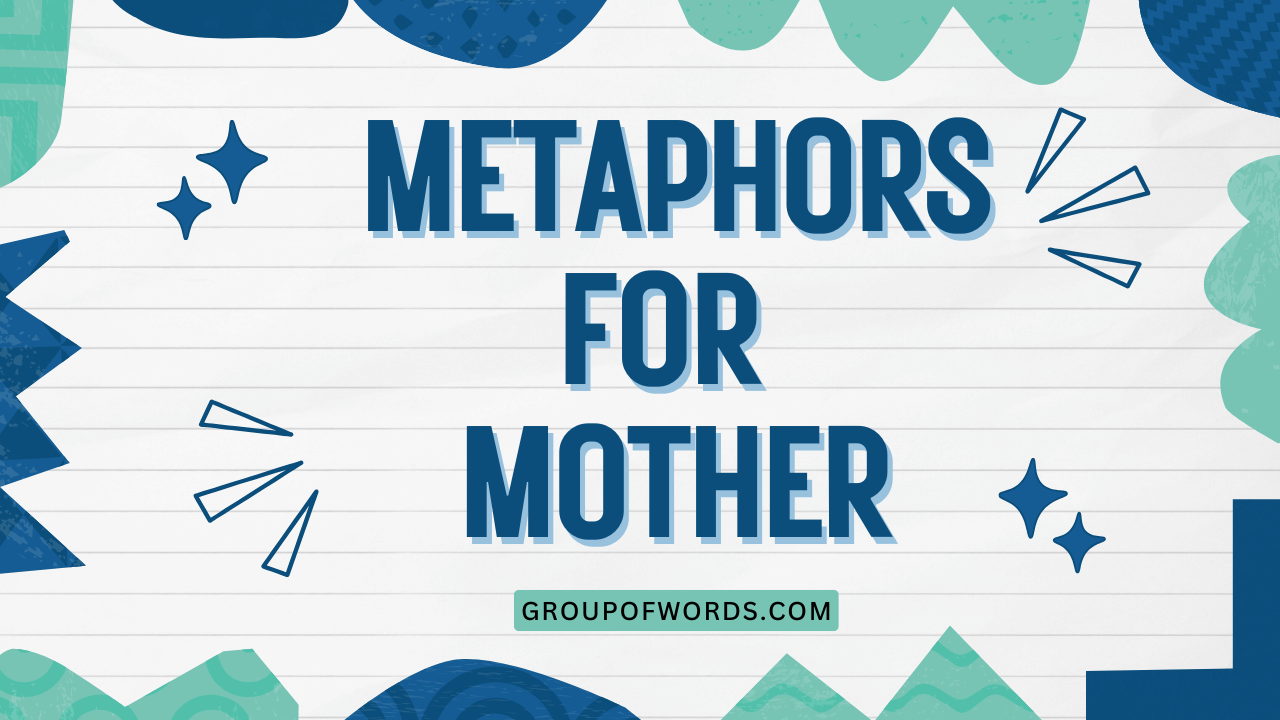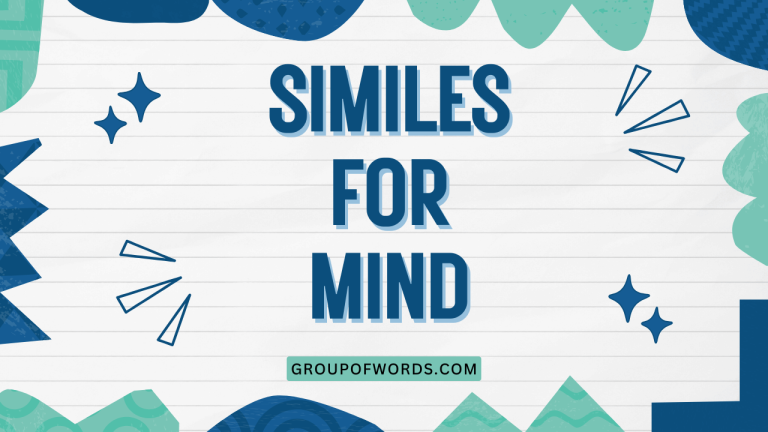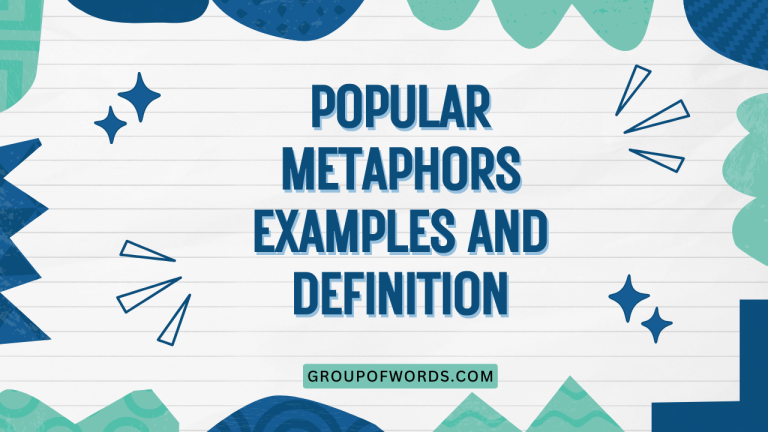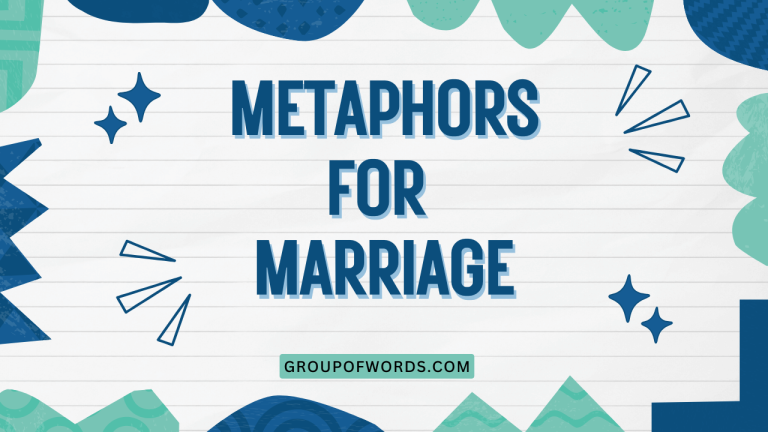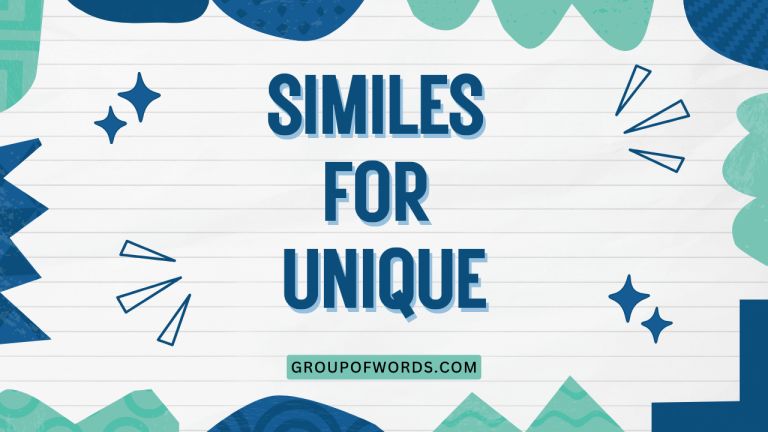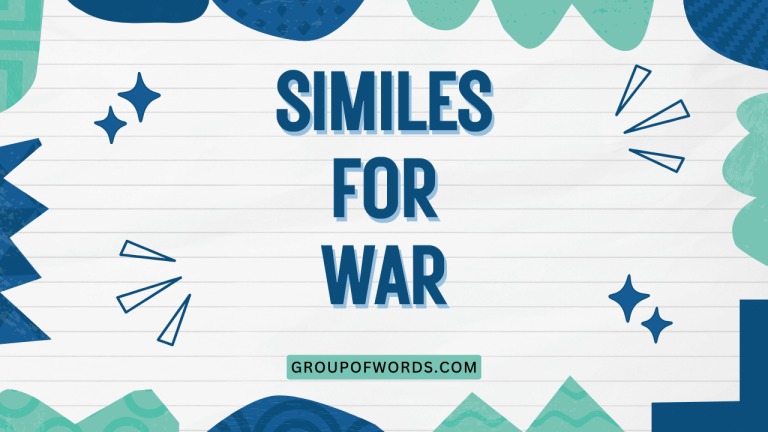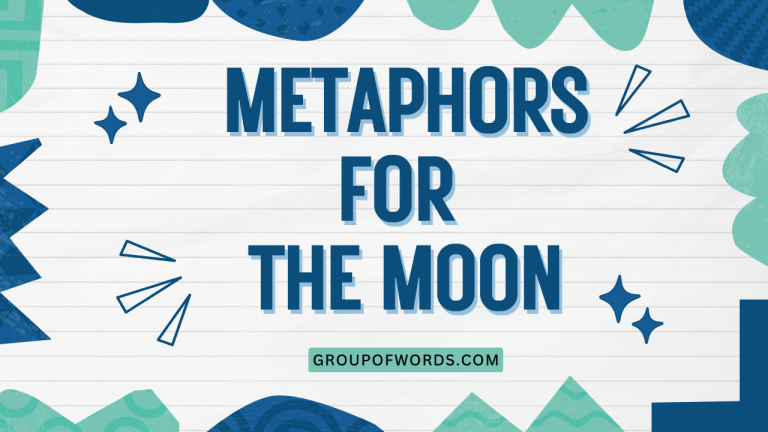Metaphors for Mother: A Grammatical Exploration
Understanding metaphors is crucial for mastering English, as they add depth and color to our language. This article delves into the fascinating world of metaphors used to describe “mother,” examining their grammatical structures and diverse meanings.
Whether you’re an English language learner, a student of literature, or simply curious about language, this guide will enhance your comprehension and appreciation of metaphorical expressions. We’ll explore various types of metaphors, analyze their usage, and provide practical exercises to solidify your understanding.
Table of Contents
- Introduction
- Definition of Metaphor
- Structural Breakdown of Metaphors
- Types of Metaphors
- Examples of Metaphors for Mother
- Usage Rules for Metaphors
- Common Mistakes with Metaphors
- Practice Exercises
- Advanced Topics in Metaphorical Analysis
- Frequently Asked Questions
- Conclusion
Introduction
Metaphors are powerful tools in the English language, allowing us to convey complex ideas and emotions through figurative language. When we use metaphors to describe a “mother,” we tap into a rich tapestry of cultural and personal associations.
This article provides a detailed exploration of these metaphors, breaking down their grammatical structures, exploring their diverse meanings, and offering practical exercises to help you master their usage. Understanding these metaphors enhances both comprehension and expression, allowing for a deeper appreciation of the nuances of the English language.
This guide is designed for English language learners, students of literature, and anyone interested in the art of figurative language.
Definition of Metaphor
A metaphor is a figure of speech that directly compares two unrelated things, asserting that one is the other, or implying that they share similar qualities, without using “like” or “as.” Its primary function is to create vivid imagery and convey deeper meaning by transferring attributes from one subject to another. Metaphors are crucial for adding color and depth to language, allowing for more creative and impactful communication. They enable us to understand abstract concepts in more concrete terms by relating them to something more familiar. They are frequently used in literature, poetry, and everyday conversation to enrich expression and evoke emotional responses.
Unlike similes, which use “like” or “as” to draw a comparison, metaphors make a more direct assertion. For instance, saying “She is like a rose” is a simile, whereas saying “She is a rose” is a metaphor, attributing the qualities of beauty and delicacy directly to the subject.
The effectiveness of a metaphor lies in its ability to create a new understanding or perspective by highlighting unexpected similarities between two seemingly disparate things. Consider the metaphor “Time is a thief.” It doesn’t literally mean time is stealing physical objects, but it effectively conveys the idea that time passes quickly and irreversibly, robbing us of moments and opportunities.
Structural Breakdown of Metaphors
A typical metaphor consists of two key elements: the tenor and the vehicle. The tenor is the subject to which metaphorical attributes are ascribed, while the vehicle is the object or concept from which those attributes are drawn. In the metaphor “My mother is my rock,” “mother” is the tenor, and “rock” is the vehicle. The metaphor suggests that the mother possesses the qualities of a rock, such as strength, stability, and reliability. The relationship between the tenor and the vehicle is crucial to understanding the metaphor’s intended meaning. The connection must be plausible and resonant for the metaphor to be effective.
Understanding the context in which a metaphor is used is also crucial. The surrounding words and phrases can provide additional clues about the intended meaning and emotional impact.
For example, the phrase “My mother is my rock in times of trouble” provides a more specific context that emphasizes the mother’s role as a source of support during difficult moments. The interplay between the tenor, the vehicle, and the context determines how the metaphor is interpreted and appreciated.
A well-constructed metaphor can evoke powerful emotions and create lasting impressions, enriching the overall communication.
Types of Metaphors
Metaphors come in various forms, each with its unique characteristics and usage. Understanding these different types can help you identify and interpret metaphors more effectively.
Implicit Metaphors
An implicit metaphor implies the comparison without explicitly stating the vehicle. Instead of directly stating the comparison, the attributes of the vehicle are subtly woven into the description of the tenor. For example, instead of saying “My mother is a guiding light,” an implicit metaphor might be “My mother illuminated my path.” The “illuminated” implies the guiding quality of a light without directly stating it. Implicit metaphors require the reader to infer the comparison, adding a layer of subtlety and complexity to the language. They often rely on verbs or adjectives that carry metaphorical weight.
Implicit metaphors can be more engaging and thought-provoking than explicit metaphors because they require the reader to actively participate in the interpretation process. They encourage a deeper level of engagement with the text and can create a more lasting impression.
However, they also require a greater understanding of the context and cultural references to be fully appreciated. A poorly constructed implicit metaphor can be confusing or ambiguous if the connection between the tenor and the implied vehicle is not clear.
Explicit Metaphors
An explicit metaphor, also known as a direct metaphor, directly states the comparison between the tenor and the vehicle. It typically uses a form of the verb “to be” or another linking verb to connect the two elements. For example, “My mother is a fountain of wisdom” is an explicit metaphor. It directly states that the mother *is* a fountain, transferring the qualities of abundance, clarity, and life-giving properties to her. Explicit metaphors are straightforward and easy to understand, making them a common choice in both written and spoken language.
Explicit metaphors are particularly useful when the writer or speaker wants to make a clear and unambiguous comparison. They leave little room for misinterpretation and can be highly effective in conveying a specific message or emotion.
However, they can also be less subtle and nuanced than implicit metaphors. The directness of the comparison can sometimes make them feel less creative or imaginative.
The key to using explicit metaphors effectively is to choose a vehicle that is both relevant and resonant with the tenor.
Extended Metaphors
An extended metaphor is a metaphor that is sustained over several lines, paragraphs, or even an entire work. It builds upon the initial comparison, exploring various aspects of the relationship between the tenor and the vehicle. For example, a poem might describe a mother as a garden, elaborating on the themes of nurturing, growth, and beauty throughout the poem. The extended metaphor allows for a more detailed and nuanced exploration of the subject, creating a richer and more complex understanding.
Extended metaphors are often used in literature to create a unifying theme or to explore a complex idea in depth. They require careful planning and execution to ensure that the comparison remains consistent and coherent throughout the piece.
The writer must carefully select details and imagery that support the central metaphor and avoid introducing elements that might contradict or undermine it. A well-crafted extended metaphor can be a powerful and memorable literary device.
Dead Metaphors
A dead metaphor is a metaphor that has become so common and overused that it has lost its figurative meaning and is now used in a literal sense. These metaphors were once creative and imaginative, but through repeated use, they have become clichés. Examples include “the heart of the matter,” “leg of the table,” and “falling in love.” These phrases are so ingrained in our language that we no longer think of them as metaphors, but rather as literal expressions.
Dead metaphors can be useful for conveying information quickly and efficiently, but they lack the impact and originality of fresh metaphors. They can also make writing seem uninspired or predictable.
While it is not always necessary to avoid dead metaphors entirely, it is important to be aware of their presence and to consider whether a more original or creative expression might be more effective. Recognizing dead metaphors can help you to refine your writing and make it more engaging and impactful.
Examples of Metaphors for Mother
Metaphors for “mother” are incredibly diverse, reflecting the myriad roles and qualities associated with motherhood. The following sections explore some common metaphorical representations of mothers.
Mother as Nurturer
Mothers are often metaphorically described as nurturers, embodying qualities of care, sustenance, and growth. These metaphors highlight the mother’s role in providing for the physical and emotional well-being of her children.
The table below provides examples of metaphors that depict a mother as a nurturer. These examples use a wide variety of vehicles to convey the idea of maternal care and support.
| Metaphor | Explanation |
|---|---|
| My mother is a wellspring of love. | Implies an endless source of affection and care. |
| She’s the sunshine in our family. | Suggests warmth, happiness, and vitality. |
| My mother is a garden, always cultivating growth. | Represents the nurturing of potential and development. |
| She’s the nourishment for my soul. | Highlights the emotional and spiritual sustenance provided. |
| My mother is a warm blanket on a cold day. | Conveys comfort, security, and protection. |
| She’s the soil that allows us to grow. | Emphasizes the foundational support and environment for development. |
| My mother is a chef, always cooking up love and care. | Suggests the preparation and provision of nurturing elements. |
| She’s the rain that helps us blossom. | Represents the essential elements needed for growth and flourishing. |
| My mother is a nursing bird, always feeding her young. | Highlights the instinctual care and provision for offspring. |
| She’s the heart of our home, pumping life into everything. | Conveys the central and vital role in the family’s well-being. |
| My mother is a balm for my wounds. | Suggests healing, comfort, and soothing relief. |
| She’s the milk that sustains us. | Emphasizes the essential nourishment provided from the beginning. |
| My mother is a fertile ground for dreams. | Represents the environment where aspirations can take root and grow. |
| She’s the fire that keeps us warm. | Conveys warmth, energy, and a sense of security. |
| My mother is a honeycomb of sweetness. | Suggests the abundance of positive qualities and affections. |
| She’s the root of our family tree. | Emphasizes the foundational and essential role in the family’s history and identity. |
| My mother is a baker, always providing treats and comforts. | Highlights the provision of small joys and indulgences. |
| She’s the blanket that covers us with love. | Conveys a sense of security, warmth, and affection. |
| My mother is a nest, a safe and cozy place. | Suggests a secure, comfortable, and nurturing environment. |
| She’s the water that quenches our thirst. | Emphasizes the essential provision of life-sustaining elements. |
| My mother is an oasis in a desert. | Conveys a place of refuge, refreshment, and hope in difficult times. |
| She’s the glue that holds our family together. | Highlights the unifying and binding role in maintaining family cohesion. |
| My mother is a treasure chest of kindness. | Suggests an abundance of positive qualities and generosity. |
| She’s the source of my strength and resilience. | Emphasizes the origin of inner power and the ability to overcome challenges. |
| My mother is a lighthouse of hope. | Conveys guidance, safety, and direction during difficult times. |
| She is the sun that helps us bloom. | Represents warmth, energy, and the necessary elements for growth. |
| My mother is a seed of potential. | Suggests the origin of future growth, development, and possibilities. |
Mother as Protector
Another common metaphorical representation depicts mothers as protectors, shielding their children from harm and providing a sense of security. These metaphors emphasize strength, vigilance, and unwavering support.
The table below provides examples of metaphors that depict a mother as a protector. These examples draw on imagery of strength, defense, and unwavering support to convey the mother’s protective role.
| Metaphor | Explanation |
|---|---|
| My mother is a shield against the world. | Suggests protection from external dangers and negativity. |
| She’s the fortress that keeps us safe. | Represents a secure and impenetrable refuge. |
| My mother is a guardian angel watching over us. | Conveys constant vigilance and divine protection. |
| She’s the armor that protects me from harm. | Highlights the strong defense against physical and emotional threats. |
| My mother is a watchdog, always alert to danger. | Emphasizes vigilance and readiness to defend. |
| She’s the lioness protecting her cubs. | Represents fierce and unwavering defense of her children. |
| My mother is a safe harbor in a storm. | Suggests a place of refuge and security during difficult times. |
| She’s the wall that keeps out the darkness. | Conveys protection from negativity and threats. |
| My mother is a bodyguard, always watching my back. | Implies a constant presence and readiness to defend. |
| She’s the umbrella that shelters us from the rain. | Represents protection from life’s difficulties and challenges. |
| My mother is a knight, defending our honor. | Suggests bravery and the willingness to fight for her family. |
| She’s the gatekeeper of our home. | Conveys the role of controlling access and ensuring safety. |
| My mother is a sentinel, always on guard. | Emphasizes vigilance and readiness to respond to threats. |
| She’s the net that catches us when we fall. | Represents support and prevention of harm. |
| My mother is a shelter from the storm. | Suggests a place of refuge and security during difficult times. |
| She’s the anchor that keeps us grounded. | Represents stability and security in the face of challenges. |
| My mother is a firewall against negativity. | Implies protection from harmful influences and criticism. |
| She’s the bubble that protects us from the world. | Conveys a safe and insulated environment. |
| My mother is a stronghold of safety. | Suggests an impenetrable place of refuge and security. |
| She’s the watchtower, always scanning the horizon. | Emphasizes vigilance and awareness of potential dangers. |
| My mother is a cushion against the hard knocks of life. | Conveys comfort, support, and prevention of pain and suffering. |
| She’s the wall that protects us from the cold. | Represents protection from emotional and physical hardships. |
| My mother is a refuge in times of trouble. | Suggests a safe and secure place to retreat to during difficult times. |
| She’s the lifeboat that saves us from drowning. | Conveys rescue and support during moments of crisis. |
| My mother is a blanket that keeps us safe and warm. | Implies comfort, security, and protection from harm. |
| She is the compass that guides us away from danger. | Represents guidance and direction to avoid harmful situations. |
| My mother is a strong bridge over troubled waters. | Suggests support and a safe passage through difficult times. |
Mother as Anchor
The metaphor of “mother as anchor” highlights the stability, grounding, and unwavering support that mothers provide. This representation emphasizes their role in keeping the family secure and connected, even amidst life’s storms.
The table below provides examples of metaphors that depict a mother as an anchor. These examples emphasize stability, security, and unwavering support.
| Metaphor | Explanation |
|---|---|
| My mother is the anchor that keeps our family grounded. | Suggests stability and prevents the family from drifting. |
| She’s the foundation upon which our lives are built. | Represents the essential and unwavering support structure. |
| My mother is the root that keeps us connected. | Conveys a deep and essential connection to family origins. |
| She’s the backbone of our family. | Highlights the strength and support she provides. |
| My mother is the pole star in our lives. | Suggests unwavering guidance and direction. |
| She’s the steady hand that guides us. | Represents calm and reliable leadership. |
| My mother is the bedrock of our existence. | Conveys a solid and unchanging foundation. |
| She’s the mooring that keeps us secure. | Suggests stability and protection from drifting. |
| My mother is the axis around which our lives revolve. | Represents a central and stabilizing presence. |
| She’s the keystone in our family arch. | Highlights the essential role in holding everything together. |
| My mother is the ballast that keeps us steady. | Suggests stability and prevents tipping over. |
| She’s the cornerstone of our family’s strength. | Represents the foundational support and stability. |
| My mother is the glue that binds us together. | Conveys the unifying force that maintains family cohesion. |
| She’s the plumb line that keeps us upright. | Suggests guidance and adherence to moral principles. |
| My mother is the equilibrium in our lives. | Represents balance and harmony. |
| She’s the heart that pumps life into our family. | Conveys the central and vital role in the family’s well-being. |
| My mother is the linchpin that holds everything together. | Suggests the essential component that prevents collapse. |
| She’s the thread that weaves our family together. | Represents the interconnectedness and unity of the family. |
| My mother is the keel that keeps us on course. | Suggests stability and direction in life’s journey. |
| She’s the cement that binds our family together. | Conveys the strong and lasting bond between family members. |
| My mother is the compass that guides us home. | Implies direction and a sense of belonging. |
| She’s the lodestar that leads us through darkness. | Suggests guidance and hope in difficult times. |
| My mother is the tether that keeps us from floating away. | Represents a secure connection and prevents detachment. |
| She’s the fulcrum that balances our lives. | Conveys the central point of support and equilibrium. |
| My mother is the axis mundi of our world. | Suggests a central and sacred point of connection. |
| She is the bedrock upon which we stand. | Represents unwavering support and stability. |
| My mother is the strong link in our family chain. | Conveys the essential connection that maintains family unity. |
Mother as Guide
Mothers are often seen as guides, providing direction, wisdom, and support to their children as they navigate life’s journey. These metaphors emphasize their role in shaping values, imparting knowledge, and offering encouragement.
The table below provides examples of metaphors that depict a mother as a guide. These examples emphasize direction, wisdom, and support.
| Metaphor | Explanation |
|---|---|
| My mother is a compass, always pointing me in the right direction. | Suggests guidance and moral direction. |
| She’s the map that helps me navigate life. | Represents a clear path and understanding of life’s challenges. |
| My mother is a lighthouse guiding me through storms. | Conveys safety and direction during difficult times. |
| She’s the north star, always showing me the way. | Highlights unwavering guidance and direction. |
| My mother is a teacher, imparting wisdom and knowledge. | Represents the transmission of values and understanding. |
| She’s the mentor who helps me grow. | Suggests guidance and support in personal development. |
| My mother is a beacon of hope in the darkness. | Conveys guidance and encouragement during difficult times. |
| She’s the trailblazer, showing me what’s possible. | Represents courage and the exploration of new paths. |
| My mother is a guardian angel, watching over me. | Suggests protection and guidance from above. |
| She’s the shepherd guiding her flock. | Represents care, protection, and direction for her children. |
| My mother is a sage, offering wise counsel. | Conveys profound knowledge and insightful advice. |
| She’s the navigator, charting my course through life. | Suggests guidance and direction in life’s journey. |
| My mother is a torchbearer, illuminating my path. | Represents guidance and inspiration. |
| She’s the pathfinder, leading me to success. | Conveys guidance and direction towards achieving goals. |
| My mother is a guiding light, always showing me the way. | Suggests direction and hope. |
| She’s the road map, helping me understand life’s journey. | Represents a clear path and navigation through challenges. |
| My mother is a beacon in the fog. | Conveys guidance and safety during uncertain times. |
| She’s the wise owl, always offering insightful advice. | Implies intelligence and thoughtful guidance. |
| My mother is a personal GPS, always knowing where to go. | Suggests precise guidance and direction. |
| She’s the moral compass that keeps me on track. | Represents ethical guidance and adherence to principles. |
| My mother is the navigator of my soul. | Conveys spiritual guidance and direction. |
| She’s the guiding star in my darkest nights. | Suggests hope and direction during difficult times. |
| My mother is the interpreter of my dreams. | Represents understanding and guidance in pursuing aspirations. |
| She’s the mentor who shapes my character. | Suggests guidance and support in developing virtues. |
| My mother is the sage who shares life’s lessons. | Conveys profound knowledge and valuable insights. |
| She’s the teacher who inspires my mind. | Represents intellectual stimulation and growth. |
| My mother is the guardian of my spirit. | Suggests protection and guidance of inner well-being. |
Mother as Home
The metaphor of “mother as home” emphasizes the comfort, security, and sense of belonging that mothers provide. It highlights their role in creating a safe and nurturing environment where children feel loved and accepted.
These metaphors often evoke feelings of warmth, familiarity, and emotional security.
The table below provides examples of metaphors that depict a mother as home. These examples emphasize comfort, security, and a sense of belonging.
| Metaphor | Explanation |
|---|---|
| My mother is my home, no matter where I am. | Suggests comfort, security, and belonging. |
| She’s the heart of our family. | Represents the central and vital role in the family’s well-being. |
| My mother is the nest where I always feel safe. | Conveys a secure, comfortable, and nurturing environment. |
| She’s the warm hearth that welcomes me. | Highlights comfort, warmth, and a sense of belonging. |
| My mother is the haven where I find peace. | Suggests a place of refuge and tranquility. |
| She’s the sanctuary where I can be myself. | Represents a safe and accepting environment. |
| My mother is the safe harbor in my life’s journey. | Conveys a place of refuge and security during difficult times. |
| She’s the foundation of my world. | Suggests stability and unwavering support. |
| My mother is the center of my universe. | Represents a central and vital presence. |
| She’s the constant in my ever-changing life. | Highlights stability and reliability. |
| My mother is the place where my heart belongs. | Conveys a deep sense of connection and belonging. |
| She’s the roots that ground me. | Suggests stability and connection to family origins. |
| My mother is the atmosphere of love in our family. | Represents the pervasive feeling of affection and care. |
| She’s the environment where I thrive. | Conveys a nurturing and supportive setting. |
| My mother is the refuge from the storm. | Suggests a safe and secure place to retreat to during difficult times. |
| She’s the blanket of comfort that surrounds me. | Represents warmth, security, and affection. |
| My mother is the oasis in my desert life. | Conveys a place of refreshment and hope in difficult times. |
| She’s the shelter from life’s harsh realities. | Suggests protection and security from external challenges. |
| My mother is the anchor that keeps me steady. | Represents stability and security in the face of challenges. |
| She’s the wellspring of warmth and affection. | Conveys an endless source of love and care. |
| My mother is the heartland of my memories. | Suggests a central and cherished place in one’s personal history. |
| She’s the homestead where I find solace. | Represents a place of comfort, security, and peace. |
| My mother is the citadel of my childhood dreams. | Conveys a secure and cherished place for imagination and aspirations. |
| She’s the inner sanctum of my soul. | Suggests a private and sacred place of reflection and peace. |
| My mother is the familiar shore to my wandering ship. | Represents a comforting and secure destination after life’s journeys. |
| She’s the eternal flame in the hearth of my life. | Conveys enduring warmth, love, and a sense of belonging. |
| My mother is the safe embrace that welcomes me always. | Suggests comfort, security, and unconditional acceptance. |
Usage Rules for Metaphors
Using metaphors effectively requires understanding certain rules and guidelines. The primary rule is to ensure that the comparison between the tenor and the vehicle is both plausible and resonant.
The metaphor should create a meaningful connection that enhances understanding and evokes emotion. Avoid using mixed metaphors, where the comparison becomes illogical or confusing due to inconsistent imagery.
For example, “He weathered the storm while climbing the ladder of success” mixes the metaphors of navigating a storm and ascending a ladder, creating a disjointed image.
Another important rule is to avoid overusing metaphors, especially clichés or dead metaphors. While familiar metaphors can be useful for conveying information quickly, they lack originality and can make writing seem uninspired.
Strive to create fresh and imaginative metaphors that add depth and color to your language. Consider the context in which the metaphor is used and tailor it to the specific audience and purpose.
A metaphor that is effective in one context may not be appropriate in another. Be mindful of cultural differences and sensitivities when using metaphors, as certain comparisons may have different connotations in different cultures.
Common Mistakes with Metaphors
One of the most common mistakes is using mixed metaphors, which occur when two or more inconsistent metaphors are combined, creating a
disjointed and confusing image. For example, saying “Let’s table that idea and nip it in the bud” combines the metaphor of putting something on a table (for later discussion) with the metaphor of stopping something from growing (nipping it in the bud). These conflicting images can confuse the reader and weaken the impact of your writing.
Another common mistake is using clichéd metaphors. Overused metaphors, such as “time is money” or “a drop in the bucket,” have lost their originality and impact. While they may be easily understood, they can make your writing seem uninspired and predictable. Strive to create fresh and imaginative metaphors that add depth and color to your language. Instead of relying on clichés, try to find new and unexpected ways to compare things.
Inappropriate metaphors can also detract from your writing. A metaphor should be appropriate for the context and audience. Using a metaphor that is too complex or obscure can confuse the reader, while using a metaphor that is too simplistic can seem condescending. Consider the tone and purpose of your writing and choose metaphors that are consistent with those elements. For example, using highly technical or scientific metaphors in a piece of creative writing might feel out of place.
Practice Exercises
To solidify your understanding of metaphors, try the following exercises:
- Identify the metaphor: Read the following sentences and identify the metaphor in each one. Explain the tenor and the vehicle.
- My mother is a second sun to me.
- Her advice is a life jacket in rough seas.
- My mom is a warm fire in winter.
- Create your own metaphor: Write three original metaphors to describe a mother. Try to use different vehicles and explore different aspects of motherhood.
- Rewrite the cliché: Replace the clichéd metaphor in the following sentence with a more original and imaginative one:
- My mother is as busy as a bee.
- Correct the mixed metaphor: Identify and correct the mixed metaphor in the following sentence:
- He jumped into the deep end and hit the ground running.
- Extend the metaphor: Choose one of the metaphors you created and extend it into a short paragraph, exploring various aspects of the comparison.
Here are some possible answers:
- Identify the metaphor:
- My mother is a second sun to me. (Metaphor: “second sun,” Tenor: mother, Vehicle: sun)
- Her advice is a life jacket in rough seas. (Metaphor: “life jacket,” Tenor: advice, Vehicle: life jacket)
- My mom is a warm fire in winter. (Metaphor: “warm fire,” Tenor: mom, Vehicle: warm fire)
- Create your own metaphor: (Examples)
- My mother is a quiet stream, gently shaping the landscape of my life.
- She is the sturdy tree against which I lean during storms.
- My mother is a vibrant melody, filling my days with harmony.
- Rewrite the cliché:
- Original: My mother is as busy as a bee.
- Rewritten: My mother is a tireless inventor, constantly creating solutions to life’s puzzles.
- Correct the mixed metaphor:
- Original: He jumped into the deep end and hit the ground running.
- Corrected: He jumped into the deep end and quickly learned to swim. OR He prepared thoroughly and hit the ground running.
- Extend the metaphor: (Example – extending “My mother is a quiet stream”)
My mother is a quiet stream, gently shaping the landscape of my life. Her waters flow with unwavering love and patience, carving paths of understanding through the rocky terrain of my challenges. She nourishes the seeds of my potential, allowing them to blossom into vibrant expressions of who I am. Her gentle current carries me forward, always guiding me towards the vast ocean of possibilities.
Advanced Topics in Metaphorical Analysis
For those interested in delving deeper into the study of metaphors, several advanced topics can be explored. These include:
- Cognitive Metaphor Theory: This theory, developed by George Lakoff and Mark Johnson, argues that metaphors are not just linguistic devices but fundamental aspects of human thought. They suggest that our understanding of abstract concepts is based on metaphorical mappings from more concrete experiences.
- Conceptual Metaphors: These are underlying metaphorical structures that shape our understanding of entire domains of knowledge. For example, the conceptual metaphor “ARGUMENT IS WAR” influences how we think about and engage in arguments.
- Metaphor and Culture: Metaphors are often culturally specific, reflecting the values, beliefs, and experiences of a particular group. Analyzing metaphors can provide insights into cultural perspectives and worldviews.
- The Role of Metaphor in Scientific Discovery: Metaphors can play a crucial role in scientific innovation by providing new ways of thinking about complex phenomena.
- Metaphor in Political Discourse: Politicians often use metaphors to frame issues, persuade audiences, and mobilize support. Analyzing these metaphors can reveal underlying ideologies and power dynamics.
Frequently Asked Questions
What is the difference between a metaphor and a simile?
A metaphor directly equates two things, while a simile uses “like” or “as” to make a comparison. For example, “She is a rose” is a metaphor, while “She is like a rose” is a simile.
Why are metaphors important?
Metaphors add depth and color to language, making it more engaging and memorable. They help us understand abstract concepts in more concrete terms and can evoke powerful emotions.
How can I improve my use of metaphors?
Practice creating original and imaginative metaphors. Avoid clichés and mixed metaphors.
Consider the context and audience when choosing metaphors.
What is a dead metaphor?
A dead metaphor is a metaphor that has become so common that it has lost its figurative meaning and is now used in a literal sense.
What is a mixed metaphor?
A mixed metaphor combines two or more inconsistent metaphors, creating a disjointed and confusing image.
Conclusion
Metaphors are powerful tools for expressing the multifaceted nature of motherhood. By understanding the different types of metaphors and how to use them effectively, you can enrich your communication and gain a deeper appreciation for the profound impact of mothers in our lives.
From nurturers and protectors to anchors and guides, the metaphorical representations of mothers reflect the diverse roles they play and the enduring love they provide. Continue to explore and experiment with metaphors to unlock the full potential of this expressive linguistic device.
